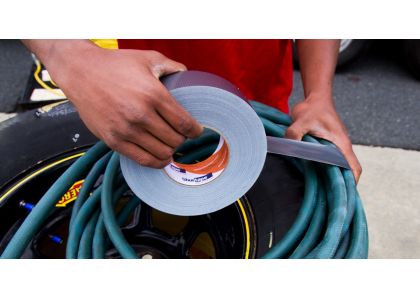
Not all tapes are created equal, and you want to make sure you are using the right kind for the job. Do you need a tape with high tack and excellent holding power or a tape designed for temporary bonding with clean removal? You should determine your application needs before selecting a tape for best results. Below are some common characteristics to consider when choosing your duct tape:
Tape thickness is measured in mils. Thickness — or gauge — is often thought of as a reflection of a tape’s overall strength, but it’s not always indicative of a tape’s adhesion or holding power. Thinner tapes are typically considered economy or utility-grade, whereas thicker tapes are often designed with thicker adhesive coatings and backings. It’s recommended to use thinner tapes for everyday or general purpose uses and thicker tapes for heavy-duty applications.
Adhesion, or the amount of force required to remove the tape once applied, is measured in ounces per inch. The higher the number, the more force it takes to remove once applied. Keep in mind that adhesion to steel does not directly correlate to adhesion on other surfaces. You can’t use this information to judge how tape will stick to brick or cardboard, for example.
Tensile is the amount of force required before the tape breaks. It’s measured in pounds per inch; the higher the number, the more stress the tape can endure before breaking.
Shear is the holding power or ability of the tape to resist slippage and is measured in minutes. This is particularly important in applications in which the tape is holding something in place, such as in HVAC applications when seaming and sealing duct work.
Tack is the initial affinity of a tape’s adhesive has to grab a surface or substrate with little to no pressure. Keep in mind that thicker isn’t necessarily better — good finger tack, or quick stick, isn’t always a reflection of strong adhesion or shear.
Elongation is the amount a tape has stretched, lengthwise, just before breaking. It’s expressed in percent; the higher the percentage, the more give the tape has.
Adhesion to backing is the ability of a tape to adhere to itself and is measured in ounces per inch. This is particularly important to consider in applications where the tape is layered or shingled, such as bundling.
Clean removal is the ability of the tape to be removed from the substrate or surface without leaving behind a sticky residue. Clean removal properties are often critical in temporary jobs or in applications that require no surface damage, such as marking, remodeling or restoration jobs.